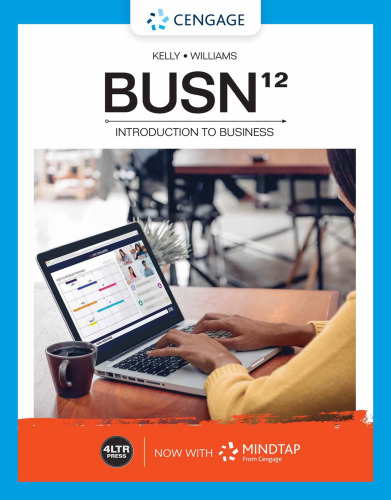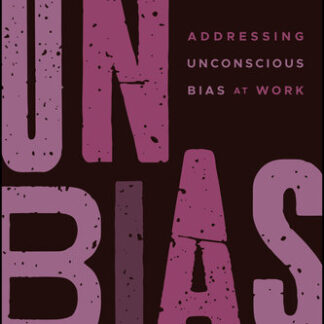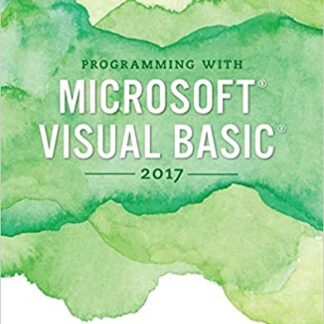Description
BUSN 12: Introduction to Business 12th Edition by Chuck Williams, ISBN-13: 978-0357122945
[PDF eBook eTextbook] – Available Instantly
- Publisher: South-Western College Publishing; 12th edition (June 3, 2022)
- Language: English
- 400 pages
- ISBN-10: 0357122941
- ISBN-13: 978-0357122945
Learn business in the way that’s best for you with Kelly/Williams BUSN, 12E and online resources from 4LTR Press. Visually-driven and current, this edition integrates even more of today”s latest examples within an interesting narrative approach. Updated content covers key business concepts while remaining brief. You see the impact of COVID-19 on businesses and individuals. New and updated chapter examples and feature boxes highlight real companies and business challenges, such as Netflix finances, GameStop stock, accounting fraud at China”s Luckin” Coffee and cash budgets for PlayStation 5 and other gaming consoles. You can study “on the go” with unique, tear-out Review Cards and chapters you can read or listen to. Learn on your terms as you use BUSN MindTap with the printed text or on its own. New online activities, cases, videos and quizzes help you prepare for exams. You can even track your scores to kn
Table of Contents:
Cover Page
Title Page
Copyright Page
Dedication
Letter to Students
Chapter 1. Business Now: Change Is the Only Constant
1-1. Business Now: Moving at Breakneck Speed
1-1a. Business Basics: Some Key Definitions
1-2. The History of Business: Putting It All in Context
1-3. Nonprofits and the Economy: The Business of Doing Good
1-4. Factors of Production: The Basic Building Blocks
1-5. The Business Environment: The Context for Success
1-5a. The Economic Environment
1-5b. The Competitive Environment
1-5c. The Workforce Advantage
1-5d. The Technological Environment
1-5e. The Social Environment
1-5f. The Global Environment
1-6. Business and You: Making It Personal
Learning Objectives/Key Terms
Chapter 2. Economics: The Framework for Business
2-1. Economics: Navigating a Crisis
2-2. Economics and the Great Recession
2-2a. Managing the Crisis
2-2b. Moving in a Better Direction
2-3. Managing the Economy Through Fiscal and Monetary Policy
2-3a. Fiscal Policy
2-3b. Debt Ceiling/Fiscal Cliff
2-3c. Monetary Policy
2-4. Capitalism: The Free Market System
2-4a. The Fundamental Rights of Capitalism
2-4b. Four Degrees of Competition
2-4c. Supply and Demand: Fundamental Principles of a Free Market System
2-5. Planned Economies: Socialism and Communism
2-5a. Socialism
2-5b. Communism
2-6. Mixed Economies: The Story of the Future
2-7. Evaluating Economic Performance: What’s Working?
2-7a. Gross Domestic Product
2-7b. Employment Level
2-7c. The Business Cycle
2-7d. Price Levels
2-7e. Productivity
Learning Objectives/Key Terms
Chapter 3. The World Marketplace: Business without Borders
3-1. A Dramatic Change
3-2. The Global Marketplace: A Huge Business Opportunity
3-2a. So Where Exactly Will the Opportunity Be?
3-2b. The Cell Phone Connection
3-3. Key Reasons for International Trade
3-3a. Competitive Advantage
3-4. Global Trade: Taking Measure
3-4a. Balance of Trade
3-4b. Balance of Payments
3-4c. Exchange Rates
3-4d. Countertrade
3-5. Seizing the Opportunity: Strategies for Reaching Global Markets
3-5a. Foreign Outsourcing and Importing
3-5b. Exporting
3-5c. Foreign Licensing and Foreign Franchising
3-5d. Foreign Direct Investment
3-6. Barriers to International Trade
3-6a. Sociocultural Differences
3-6b. Economic Differences
3-6c. Political and Legal Differences
3-7. Free Trade: The Movement Gains Momentum
3-7a. GATT and the World Trade Organization
3-7b. The World Bank
3-7c. The International Monetary Fund
3-7d. Trading Blocs and Common Markets
Learning Objectives/Key Terms
Chapter 4. Business Ethics and Social Responsibility: Doing Well by Doing Good
4-1. Ethics and Social Responsibility: A Close Relationship
4-1a. Defining Ethics: Murkier Than You’d Think
4-1b. Universal Ethical Standards: A Reasonable Goal or Wishful Thinking?
4-2. Business Ethics: Not an Oxymoron
4-3. Ethics: Multiple Touchpoints
4-3a. Ethics and the Individual: The Power of One
4-3b. Ethics and the Organization: It Takes a Village
4-3c. Creating and Maintaining an Ethical Organization
4-4. Defining Social Responsibility: Making the World a Better Place
4-4a. The Stakeholder Approach: Responsibility to Whom?
4-5. Ethics and Social Responsibility in the Global Arena: A House of Mirrors?
4-6. Monitoring Ethics and Social Responsibility: Who Is Minding the Store?
Learning Objectives/Key Terms
Chapter 5. Business Communication: Creating and Delivering Messages That Matter
5-1. Excellent Communication Skills: Your Invisible Advantage
5-1a. Communication Barriers: “That’s Not What I Meant!”
5-2. Nonverbal Communication: Beyond the Words
5-2a. Active Listening: the Great Divider
5-3. Choose the Right Channel: A Rich Array of Options
5-3a. The Dramatic Rise of Videoconferencing
5-3b. Consider the Audience: It’s Not About You!
5-4. Pick The Right Words: Is That Car Pre-Loved or Just Plain Used?!
5-4a. Analyze Your Audience
5-4b. Be Concise
5-4c. Avoid Slang
5-4d. Avoid Bias
5-4e. Use the Active Voice Whenever Possible
5-5. Write High-Impact Messages: Breaking Through the Clutter
5-5a. Strike the Right Tone
5-5b. Don’t Make Grammar Goofs
5-5c. Use Block Paragraphs
5-5d. Use Headings and Bulleted Lists Wherever Appropriate
5-6. Deliver Successful Verbal Presentations: Hook ‘Em and Reel ’Em In!
5-6a. Opening
5-6b. Body
5-6c. Close
5-6d. Questions
5-6e. Visual Aids
5-6f. Google Presentations
5-6g. Handling Nerves
5-6h. Handling Hostility
5-6i. Incorporating Humor
5-6j. A Spot on the Back Wall?
5-6k. Delivery
Learning Objectives/Key Terms
Chapter 6. Business Formation: Choosing the Form That Fits
6-1. Business Ownership Options: The Big Four
6-2. Advantages and Disadvantages of Sole Proprietorships
6-2a. Advantages
6-2b. Disadvantages
6-3. Partnerships: Can Two Heads (and Bankrolls) Be Better Than One?
6-3a. Formation of General Partnerships
6-3b. Advantages of General Partnerships
6-3c. Disadvantages of General Partnerships
6-3d. Limited Partnerships
6-3e. Limited Liability Partnerships
6-4. Corporations: The Advantages and Disadvantages of Being an Artificial Person
6-4a. Forming a C Corporation
6-4b. Ownership of C Corporations
6-4c. The Role of the Board of Directors
6-4d. Advantages of C Corporations
6-4e. Disadvantages of C Corporations
6-4f. Other Types of Corporations: Same but Different
6-4g. Corporate Restructuring
6-5. The Limited Liability Company: The New Kid on the Block
6-5a. Forming and Managing an LLC
6-5b. Advantages of LLCs
6-5c. Limitations and Disadvantages of LLCs
6-6. Franchising: Proven Methods for a Price
6-6a. Franchising in Today’s Economy
6-6b. Advantages of Franchising
6-6c. Disadvantages of Franchising
6-6d. Entering into a Franchise Agreement
Learning Objectives/Key Terms
Chapter 7. Small Business and Entrepreneurship: Economic Rocket Fuel
7-1. Launching a New Venture: What’s in It for Me?
7-1a. Greater Financial Success
7-1b. Independence
7-1c. Flexibility
7-1d. Challenge
7-1e. Survival
7-2. The Entrepreneur: A Distinctive Profile
7-2a. The Entrepreneurial Mindset: A Matter of Attitude
7-2b. Entrepreneurial Characteristics
7-3. Finding the Money: Funding Options for Small Businesses
7-3a. Personal Resources
7-3b. Loans
7-3c. Crowdfunding
7-3d. Angel Investors
7-3e. Venture Capital
7-4. Opportunities and Threats for Small Business: A Two-Sided Coin
7-4a. Small Business Opportunities
7-4b. Small Business Threats
7-5. Launch Options: Reviewing the Pros and Cons
7-5a. Making It Happen: Tools for Business Success
7-6. Small Business and the Economy: An Outsized Impact
7-6a. Entrepreneurship around the World
Learning Objectives/Key Terms
Chapter 8. Accounting: Decision Making by the Numbers
8-1. Accounting: Who Needs It—and Who Does It?
8-1a. Accounting: Who Uses It?
8-1b. Accounting: Who Does It?
8-2. Financial Accounting: Intended for Those on the Outside Looking in
8-2a. Role of the Financial Standards Accounting Board
8-2b. Ethics in Accounting
8-3. Financial Statements: Read All about Us
8-3a. The Balance Sheet: What We Own and How We Got It
8-3b. The Income Statement: So, How Did We Do?
8-3c. The Statement of Cash Flows: Show Me the Money
8-3d. Other Statements: What Happened to the Owners’ Stake?
8-4. Interpreting Financial Statements: Digging beneath the Surface
8-4a. The Independent Auditor’s Report: Getting a Stamp of Approval
8-4b. Checking Out the Notes to Financial Statements: What’s in the Fine Print?
8-4c. Looking for Trends in Comparative Statements
8-5. Budgeting: Planning for Accountability
8-5a. Preparing the Budget: Top-Down or Bottom-Up?
8-5b. Developing the Key Budget Components: One Step at a Time
8-5c. Being Flexible: Clearing Up Problems with Static Budgets
8-6. Inside Intelligence: The Role of Managerial Accounting
8-6a. Cost Concepts: A Cost for All Reasons
8-6b. Assigning Costs to Products: As (Not So) Simple as ABC?
Learning Objectives/Key Terms
Chapter 9. Finance: Acquiring and Using Funds to Maximize Value
9-1. What Motivates Financial Decisions?
9-1a. Shareholder Value and Social Responsibility: Does Good Behavior Pay Off?
9-1b. Risk and Return: A Fundamental Trade-Off in Financial Management
9-2. Identifying Financial Needs: Evaluation and Planning
9-2a. Using Ratio Analysis to Identify Current Strengths and Weaknesses
9-2b. Planning Tools: Creating a Road Map to the Future
9-2c. Basic Planning Tools: Budgeted Financial Statements and the Cash Budget
9-3. Finding Funds: What Are the Options?
9-3a. Sources of Short-Term Financing: Meeting Needs for Cash
9-3b. Sources of Long-Term Funds: Providing a Strong Financial Base
9-4. Leverage and Capital Structure: How Much Debt Is Too Much Debt?
9-4a. Pros and Cons of Debt Financing
9-4b. Pros and Cons of Equity Financing
9-4c. Financial Leverage: Using Debt to Magnify Gains (and Losses)
9-5. Acquiring and Managing Current Assets
9-5a. Managing Cash: Is It Possible to Have Too Much Money?
9-5b. Managing Accounts Receivable: Pay Me Now or Pay Me Later
9-5c. Managing Inventories: Taking Stock of the Situation
9-6. Capital Budgeting: In It for the Long Haul
9-6a. Evaluating Capital Budgeting Proposals
9-6b. Accounting for the Time Value of Money
9-6c. The Risk-Return Trade-Off Revisited
9-6d. Net Present Value: A Decision Rule for Capital Budgeting
Learning Objectives/Key Terms
Chapter 10. Financial Markets: Allocating Financial Resources
10-1. The Role of Financial Markets and Their Key Players
10-1a. Depository Institutions
10-1b. Nondepository Financial Institutions
10-2. Regulating Financial Markets to Protect Investors and Improve Stability
10-2a. Financial Regulation: Early Efforts
10-2b. Deregulation During the 1980s and 1990s: Temporarily Reversing Course
10-2c. Recent Developments: Reregulation in the Aftermath of Financial Turmoil
10-3. Investing in Financial Securities: What Are the Options?
10-3a. Common Stock: Back to Basics
10-3b. Preferred Stock: Getting Preferential Treatment
10-3c. Bonds: Earning Your Interest
10-3d. Convertible Securities: The Big Switch
10-3e. Mutual Funds and ETFs: Diversification Made Easy
10-3f. Exchange Traded Funds: Real Basket Cases (and We Mean That in a Good Way)
10-4. Issuing and Trading Securities: The Primary and Secondary Markets
10-4a. The Primary Securities Market: Where Securities Are Issued
10-4b. Secondary Securities Markets: Let’s Make a Deal
10-5. Personal Investing
10-5a. Choosing a Broker: Gaining Access to the Markets
10-5b. Buying Securities: Let’s Make a Deal
10-5c. Strategies for Investing in Securities
10-6. Keeping Tabs on the Market
10-6a. Stock Indices: Tracking the Trends
10-6b. Tracking the Performance of Specific Securities
Learning Objectives/Key Terms
Chapter 11. Marketing: Building Profitable Customer Connections
11-1. Marketing: Getting Value by Giving Value
11-1a. The Scope of Marketing: It’s Everywhere!
11-1b. The Evolution of Marketing: From the Product to the Customer
11-2. The Customer: Front and Center
11-2a. Customer Relationship Management (CRM)
11-2b. Perceived Value versus Actual Value
11-2c. Customer Satisfaction
11-2d. Customer Loyalty
11-3. Marketing Strategy: Where Are You Going, and How Will You Get There?
11-3a. Target Market
11-3b. Consumer Markets versus Business Markets
11-3c. Consumer Market Segmentation
11-3d. Business Market Segmentation
11-3e. The Marketing Mix
11-3f. The Global Marketing Mix
11-3g. The Marketing Environment
11-3h. The Global Marketing Environment
11-4. Customer Behavior: Decisions, Decisions, Decisions!
11-4a. Consumer Behavior
11-4b. Business Buyer Behavior
11-5. Marketing Research: So, What Do They Really Think?
11-5a. Types of Data
11-5b. Primary Research Tools
11-5c. An International Perspective
11-6. Social Responsibility and Technology: A Major Marketing Shift
11-6a. Marketing and Society: It’s Not Just About You!
11-6b. Technology and Marketing: Power to the People!
Learning Objectives/Key Terms
Chapter 12. Product and Promotion: Creating and Communicating Value
12-1. Product: It’s Probably More Than You Thought
12-1a. Services: A Product by Any Other Name
12-1b. Goods versus Services: A Mixed Bag
12-1c. Product Layers: Peeling the Onion
12-1d. Actual Product
12-1e. Product Classification: It’s a Bird, It’s a Plane…
12-2. Product Differentiation and Planning: A Meaningful Difference
12-2a. Product Quality
12-2b. Features and Benefits
12-2c. Product Lines and the Product Mix
12-2d. Branding
12-2e. Packaging
12-3. Innovation and the Product Life Cycle: Nuts, Bolts, and a Spark of Brilliance
12-3a. Types of Innovation
12-3b. The New Product Development Process
12-3c. New Product Adoption and Diffusion
12-3d. The Product Life Cycle: Maximizing Results over Time
12-4. Promotion: Influencing Consumer Decisions
12-4a. Promotion in Chaos: Danger or Opportunity?
12-4b. Integrated Marketing Communication: Consistency and Focus
12-4c. Coordinating the Communication
12-5. A Meaningful Message: Finding the Big Idea
12-5a. An International Perspective
12-6. The Promotional Mix: Communicating the Big Idea
12-6a. Emerging Promotional Tools: The Leading Edge
12-6b. Traditional Promotional Tools: A Marketing Mainstay
12-6c. Choosing the Right Promotional Mix: Not Just a Science
Learning Objectives/Key Terms
Chapter 13. Distribution and Pricing: Right Product, Right Person, Right Place, Right Price
13-1. Distribution: Getting Your Product to Your Customer
13-1a. The Role of Distributors: Adding Value
13-2. Wholesalers: Sorting Out the Options
13-2a. Merchant Wholesalers
13-2b. Agents and Brokers
13-3. Retailers: The Consumer Connection
13-3a. Store Retailers
13-1b. Nonstore Retailers
13-4. Physical Distribution: Planes, Trains, and Much, Much More
13-4a. Transportation Decisions
13-4b. Proactive Supply Chain Management
13-5. Pricing Objectives and Strategies: A High-Stakes Game
13-5a. Building Profitability
13-5b. Boosting Volume
13-5c. Matching the Competition
13-5d. Creating Prestige
13-6. Pricing in Practice: A Real-World Approach
13-6a. Breakeven Analysis
13-6b. Fixed Margin Pricing
13-6c. Consumer Pricing Perceptions: The Strategic Wild Card
Learning Objectives/Key Terms
Chapter 14. Management, Motivation, and Leadership: Bringing Business to Life
14-1. Bringing Resources to Life
14-1a. Management Hierarchy: Levels of Responsibility
14-1b. Management Skills: Having What It Takes to Get the Job Done
14-2. Motivation: Lighting the Fire
14-2a. Theories of Motivation
14-2b. Theory X and Theory Y
14-2c. Motivation Today
14-3. Planning: Figuring Out Where to Go and How to Get There
14-3a. Strategic Planning: Setting the Agenda
14-4. Organizing: Fitting Together the Puzzle Pieces
14-4a. Key Organizing Considerations
14-4b. Organization Models
14-5. Leadership: Directing and Inspiring
14-5a. Leadership Style
14-6. Controlling: Making Sure It All Works
Learning Objectives/Key Terms
Chapter 15. Human Resource Management: Building a Top-Quality Workforce
15-1. Human Resource Management: Bringing Business to Life
15-2. Human Resource Management Challenges: Major Hurdles
15-2a. Outsourcing
15-2b. Wage Gap
15-2c. Older Workers
15-2d. Younger Workers
15-2e. Women Workers
15-2f. Work–Life Balance
15-2g. Lawsuits
15-3. Human Resources Managers: Corporate Black Sheep?
15-3a. The Problem
15-3b. The Solution
15-4. Human Resource Planning: Drawing the Map
15-4a. Recruitment: Finding the Right People
15-4b. Selection: Making the Right Choice
15-4c. Training and Development: Honing the Competitive Edge
15-4d. Evaluation: Assessing Employee Performance
15-4e. Compensation: Show Me the Money
15-4f. Benefits: From Birthday Cakes to Death Benefits
15-4g. Separation: Breaking Up Is Hard to Do
15-5. Legal Issues: HR and the Long Arm of the Law
15-5a. Affirmative Action: The Active Pursuit of Equal Opportunity
15-5b. Sexual Harassment: Eliminating Hostility
15-6. Diversity in Contemporary Business
Learning Objectives/Key Terms
Chapter 16. Managing Information and Technology: Finding New Ways to Learn and Link
16-1. Information Technology: Explosive Change
16-1a. Hardware and Software
16-1b. Networks
16-1c. The Role of the IT Department
16-2. Cloud Computing: The Sky’s the Limit!
16-3. Information Technology and Decision Making: A Crucial Aid
16-3a. Data and Information
16-3b. Characteristics of Good Information
16-3c. Using Information Technology to Improve Decision Making
16-3d. Expert Systems
16-4. Information Technology and the World of E-Commerce
16-4a. Using Information Technology in the B2C Market
16-4b. Using Information Technology in the B2B Market
16-5. Challenges and Concerns Arising from New Technologies
16-5a. Malware
16-5b. Spam, Phishing, and Pharming
16-5c. Hackers: Break-Ins in Cyberspace
16-5d. Ethical and Legal Issues
Learning Objectives/Key Terms
Chapter 17. Operations Management: Putting It All Together
17-1. Operations Management: Producing Value in a Changing Environment
17-1a. Responding to a Changing Environment
17-2. What Do Operations Managers Do?
17-2a. Process Selection and Facility Layout
17-2b. Facility Location
17-2c. Inventory Control: Knowing When to Hold ’Em
17-2d. Project Scheduling
17-2e. Designing and Managing Value Chains
17-3. Implications of a Service-Based Economy: Responding to Different Challenges
17-3a. Designing the Servicescape
17-3b. How Big Is Big Enough?
17-4. The Technology of Operations
17-4a. Automation: The Rise of the Machine
17-4b. Software Technologies
17-5. Focus on Quality
17-5a. Waking Up to the Need for Quality
17-5b. How Global Firms Responded to the Quality Challenge
17-5c. Quality Standards and Initiatives
17-6. The Move to Be Lean and Green: Cutting Cost and Cutting Waste
17-6a. Reducing Investment in Inventory: Just-In-Time to the Rescue
17-6b. Lean Thinking in the Service Sector
17-6c. Green Practices: Helping the Firm by Helping the Environment
Learning Objectives/Key Terms
Personal Finance Appendix
A-1. Your Budget
A-1a. How Do I Get Started?
A-2. Your Savings: Building a Safety Net
A-3. Your Credit: Handle with Care!
A-3a. Credit Cards: Boon or Bane?
A-3b. The Devil in the Details—Understanding Your Credit Card Agreement!
A-3c. Protection for Consumers: New Laws and Regulations
A-3d. Using Credit Cards Wisely: The Need for Discipline
A-4. Your Investments: Building for the Future
A-4a. Building Wealth: The Key Is Consistency—And an Early Start!
A-4b. Acquiring Financial Assets: The Role of a Broker
A-4c. Building a Portfolio: A Few Words about Diversification, Risk, and Return
A-4d. But What Is My Best Investment? (Hint: Look in the Mirror!)
A-4e. Investing for the Long Term: Planning for Your Retirement
Learning Objectives/Key Terms
Online Appendix 1. Labor Unions and Collective Bargaining
Online Appendix 2. Business Law
What makes us different?
• Instant Download
• Always Competitive Pricing
• 100% Privacy
• FREE Sample Available
• 24-7 LIVE Customer Support













